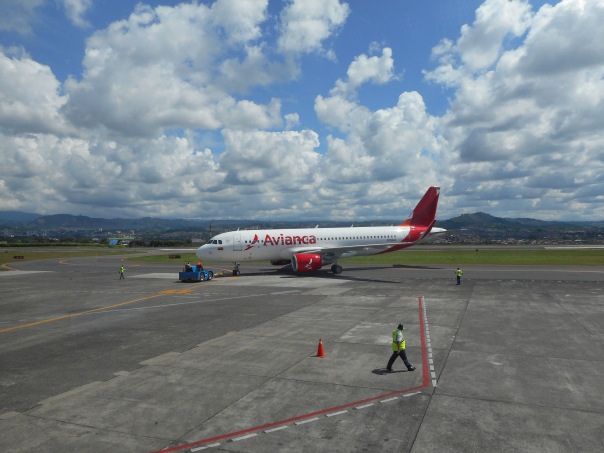By bus, plane, and car. On to Sogamoso
16 January 2017
Today was a very long day of travel. We were supposed to fly from Manizales to Bogota, pick up the lake coring equipment that we left there, and then drive about 3.5 hours northeast to the city of Sogamoso. However, after spending a couple hours waiting for our plane to arrive, our flight was cancelled. The weather didn’t seem particularly bad, but the Manizales airport closed. Apparently it closes about 50% of the time. Perhaps it was ash from the volcano?
The airline provided a bus to transport passengers to Pereira, the nearest place with an airport, and we were rebooked on a flight to Bogota from there. Having seen the public bus passing cars on the winding road up the mountains from Manizales a couple days ago, I was a bit nervous about the bus trip. However, the ride was uneventful and we arrived in Pereira in about an hour and a half. We observed endless coffee fields on the drive, and given that Pereira is only at about 1000 meters in elevation, the temperature was considerably warmer when we arrived at the airport.

We were happy to see our plane arrive from Bogota. In the background is Pereira.
We arrived in Bogota about 5 hours later than we had scheduled. Unfortunately, the truck that we had reserved at the Bogota airport was not available because it was wrecked in a crash by the previous renter. I can’t say that I was surprised. So we rented an SUV instead, a Toyota Fortuner which I had never heard of, and once we loaded the coring equipment there was very little room left for passengers. However, we all squeezed in and headed out into the rush hour traffic of Bogota. Lots of public diesel buses made for pretty bad pollution. However, we made it to Sogamoso in reasonable time, stopping along the way for a tamal and flatbread for dinner, and arrived at our hostel a little after 10 pm – about 14 hours of traveling. I was tired, but excited to see a new paramo ecosystem.
Posted on January 20, 2017, in Colombia 2016, Conservation & Biodiversity (EES-28), Fieldwork, Research, Uncategorized, Wetland ecology (EES-386) and tagged Colombia, Fieldwork, Research. Bookmark the permalink. Leave a comment.
Leave a comment
Comments 0